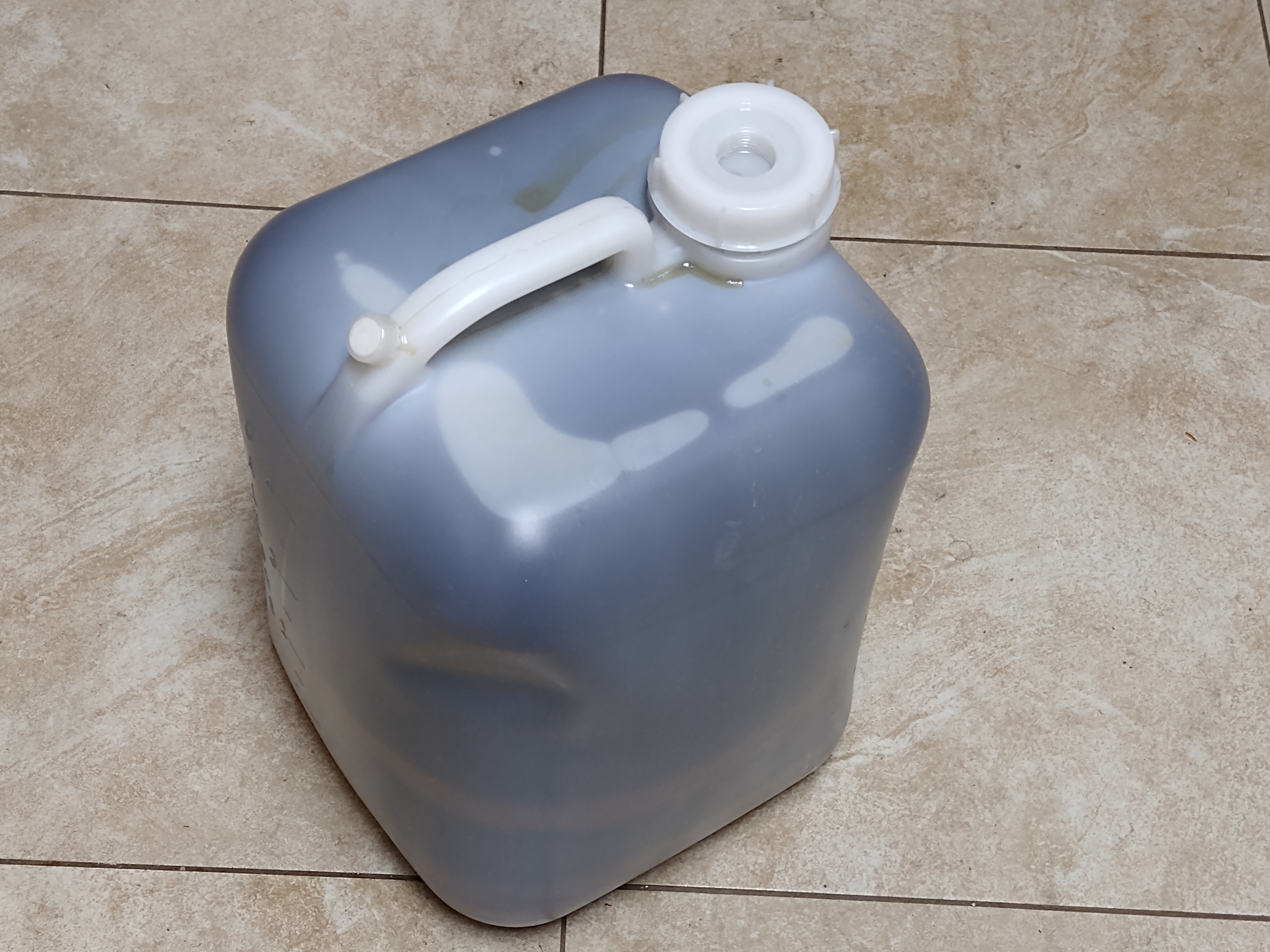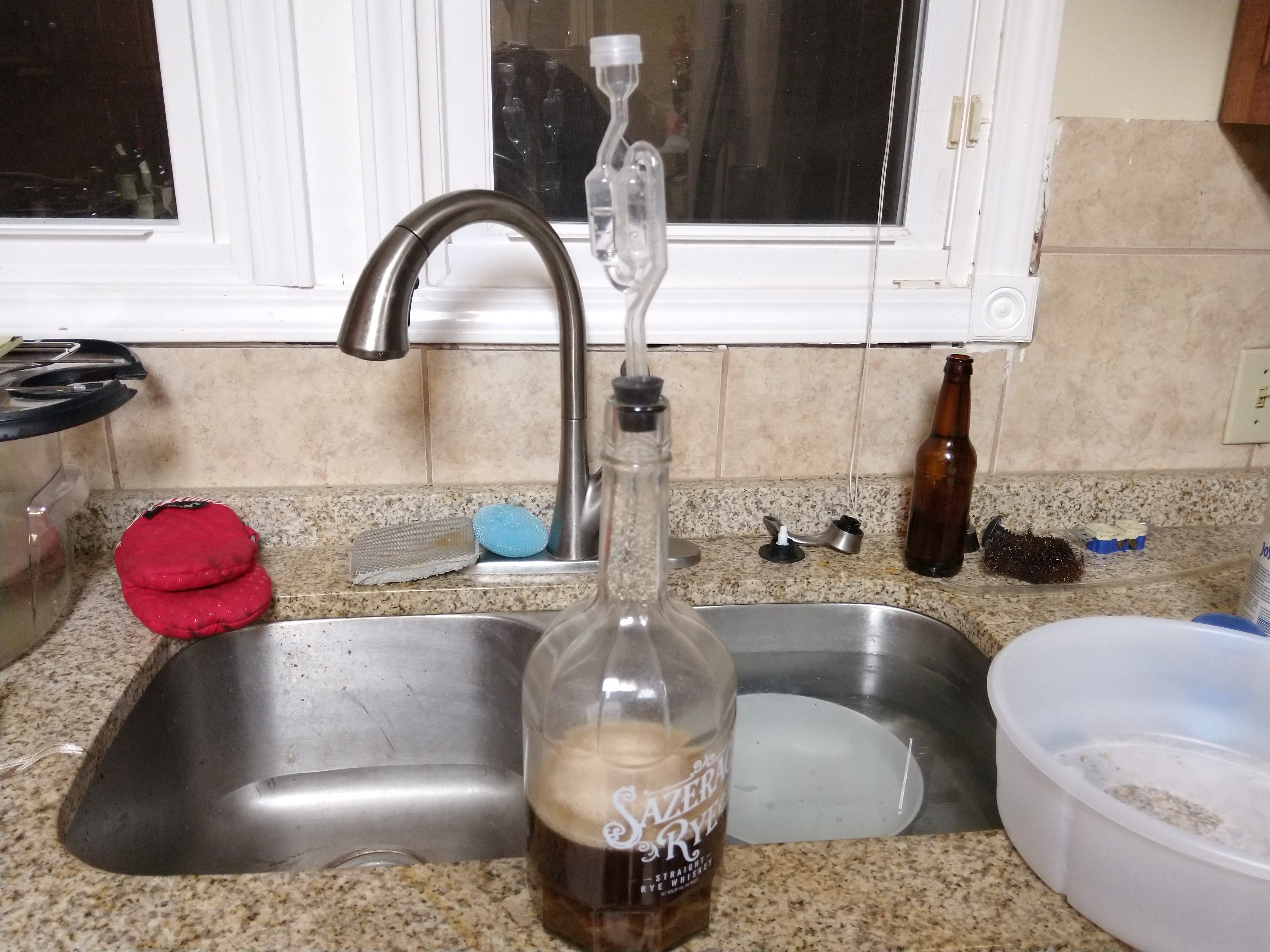GrowleyMonster
Well-Known Member
- Joined
- Sep 28, 2019
- Messages
- 382
- Reaction score
- 277
As my beers have got bigger, I have had more problems with mash temps. I was grossly underestimating the required mash-in temperatures and having to turn the burner on to bring the temp up, and it would sometimes overshoot my desired temperature. My last brew day was an eye opener. It was a cold and windy day, maybe 50F, and a 19lb mash bill for a 5.5 gallon BIAB / No-Chill batch and I wanted 150 mash temp. So my temp danced around up and down as I furiously adjusted and adjusted and heated and stirred and measured, and finally instead of the expected 1.09 or whatever OG I ended up with 1.077, still a large beer but in the Brewer's Friend recipe tool I had to substitute 57% brewhouse efficiency for the default 70% to get 1.077 predicted. That tells me my efficiency WAS 57% as I see it. Not satisfactory. Well, yeah satisfactory in that the beer should still be great, but it is not going to hit my target 10% ABV.
So I turned to the www and had a look at the BIAB calculator at biabcalculator.com and it looks like my strike temp should have been 160F, about 6 degrees higher than what I used. Now obviously cooler grain or more grain will soak up more heat from the strike water than warmer grain or less of it. So there definitely reaches a point where the water is high enough to denature the enzymes in the initial stages of adding the grain and stirring. Is this an issue? Do I need to just add really fast and stir it in even faster? I didn't time myself but put it this way... pouring grain a cup at a time and stirring by hand, with a big pot spoon, no helper, so probably took 10 minutes to completely get all my grain in the bag. So the first cups would be exposed to the full strike temp of 160 if that is what I used. However, that would at least in theory make all the heating and adjusting and overcompensating and undercompensating while my grain asks why this incompetent redneck is abusing it, a thing of the past. What are the general feelings here on this? If I used a strike temp of as high as say 164F to hit my desired mash in temp, is that a bad thing, and how bad of a bad thing might it be? Could I gently heat my grain to say 140F in the oven before mash-in? I really feel like I need to get my BH efficiency back up to around 70%. I can make great big ol beers by just throwing more grain at the problem but eventually it becomes unmanageable with a LOT of wort tossed with the grain. Yeah I am holding back a couple gallons and doing a sparge, but there is still a lot of juice left in the grain even after squeezing.
Not that it is germaine to this issue, but this was my first no-chill batch. That part seems to go pretty slick. Used a "cube" type 5gal jug (actually holds a bit more) and squeezed all the air out after a 90 min boil. Reserved a little leftover wort and ice bath chilled, and made my starter from that, transferred to Big Mouth Bubbler next day and pitched the entire starter. So today is third day in the fermenter and SG is down to 1.023 by the Tilt, krausen about 3/4 fallen, still bubbling strongly in the airlock, and I am thinking FG will be around 1.014 or so. I'll take it. But I know I am going to have to do something about my mash temps to get my efficiency up. Is 70% unrealistic for a 1.091+ SG beer?
So I turned to the www and had a look at the BIAB calculator at biabcalculator.com and it looks like my strike temp should have been 160F, about 6 degrees higher than what I used. Now obviously cooler grain or more grain will soak up more heat from the strike water than warmer grain or less of it. So there definitely reaches a point where the water is high enough to denature the enzymes in the initial stages of adding the grain and stirring. Is this an issue? Do I need to just add really fast and stir it in even faster? I didn't time myself but put it this way... pouring grain a cup at a time and stirring by hand, with a big pot spoon, no helper, so probably took 10 minutes to completely get all my grain in the bag. So the first cups would be exposed to the full strike temp of 160 if that is what I used. However, that would at least in theory make all the heating and adjusting and overcompensating and undercompensating while my grain asks why this incompetent redneck is abusing it, a thing of the past. What are the general feelings here on this? If I used a strike temp of as high as say 164F to hit my desired mash in temp, is that a bad thing, and how bad of a bad thing might it be? Could I gently heat my grain to say 140F in the oven before mash-in? I really feel like I need to get my BH efficiency back up to around 70%. I can make great big ol beers by just throwing more grain at the problem but eventually it becomes unmanageable with a LOT of wort tossed with the grain. Yeah I am holding back a couple gallons and doing a sparge, but there is still a lot of juice left in the grain even after squeezing.
Not that it is germaine to this issue, but this was my first no-chill batch. That part seems to go pretty slick. Used a "cube" type 5gal jug (actually holds a bit more) and squeezed all the air out after a 90 min boil. Reserved a little leftover wort and ice bath chilled, and made my starter from that, transferred to Big Mouth Bubbler next day and pitched the entire starter. So today is third day in the fermenter and SG is down to 1.023 by the Tilt, krausen about 3/4 fallen, still bubbling strongly in the airlock, and I am thinking FG will be around 1.014 or so. I'll take it. But I know I am going to have to do something about my mash temps to get my efficiency up. Is 70% unrealistic for a 1.091+ SG beer?




























![Craft A Brew - Safale S-04 Dry Yeast - Fermentis - English Ale Dry Yeast - For English and American Ales and Hard Apple Ciders - Ingredients for Home Brewing - Beer Making Supplies - [1 Pack]](https://m.media-amazon.com/images/I/41fVGNh6JfL._SL500_.jpg)
































